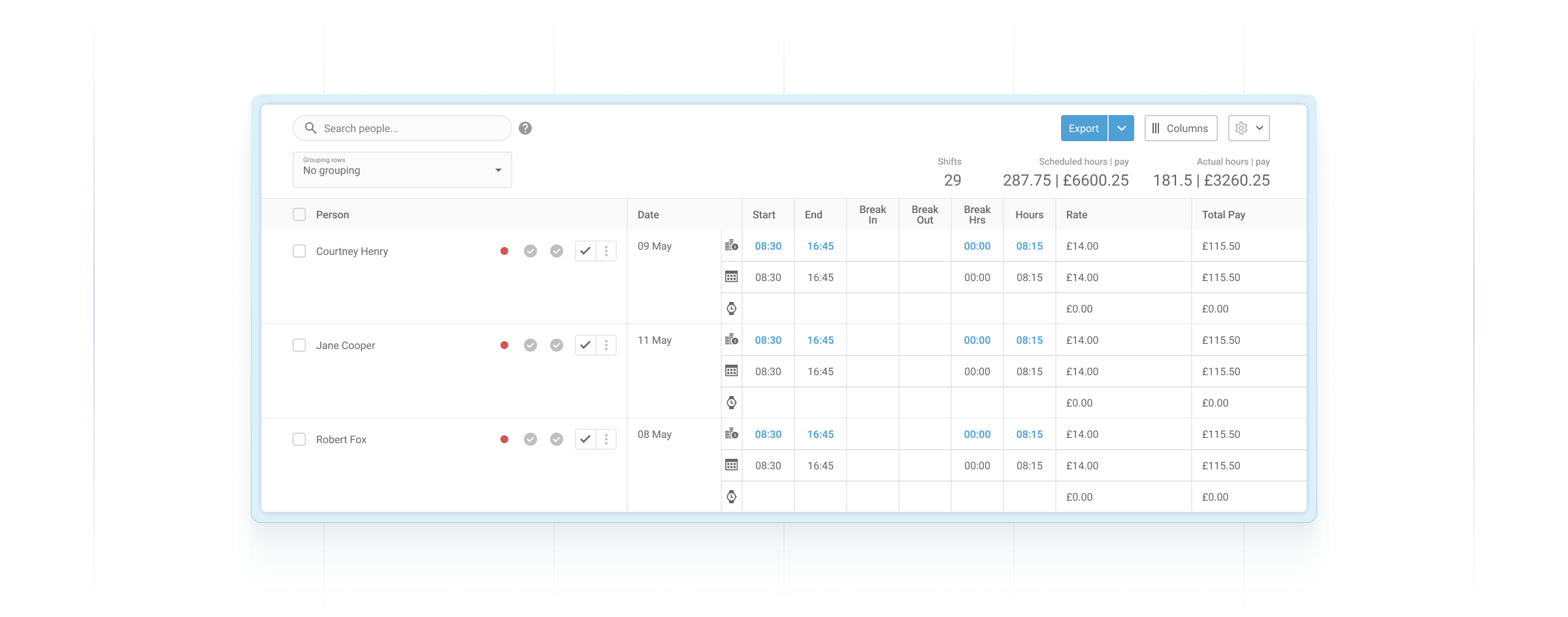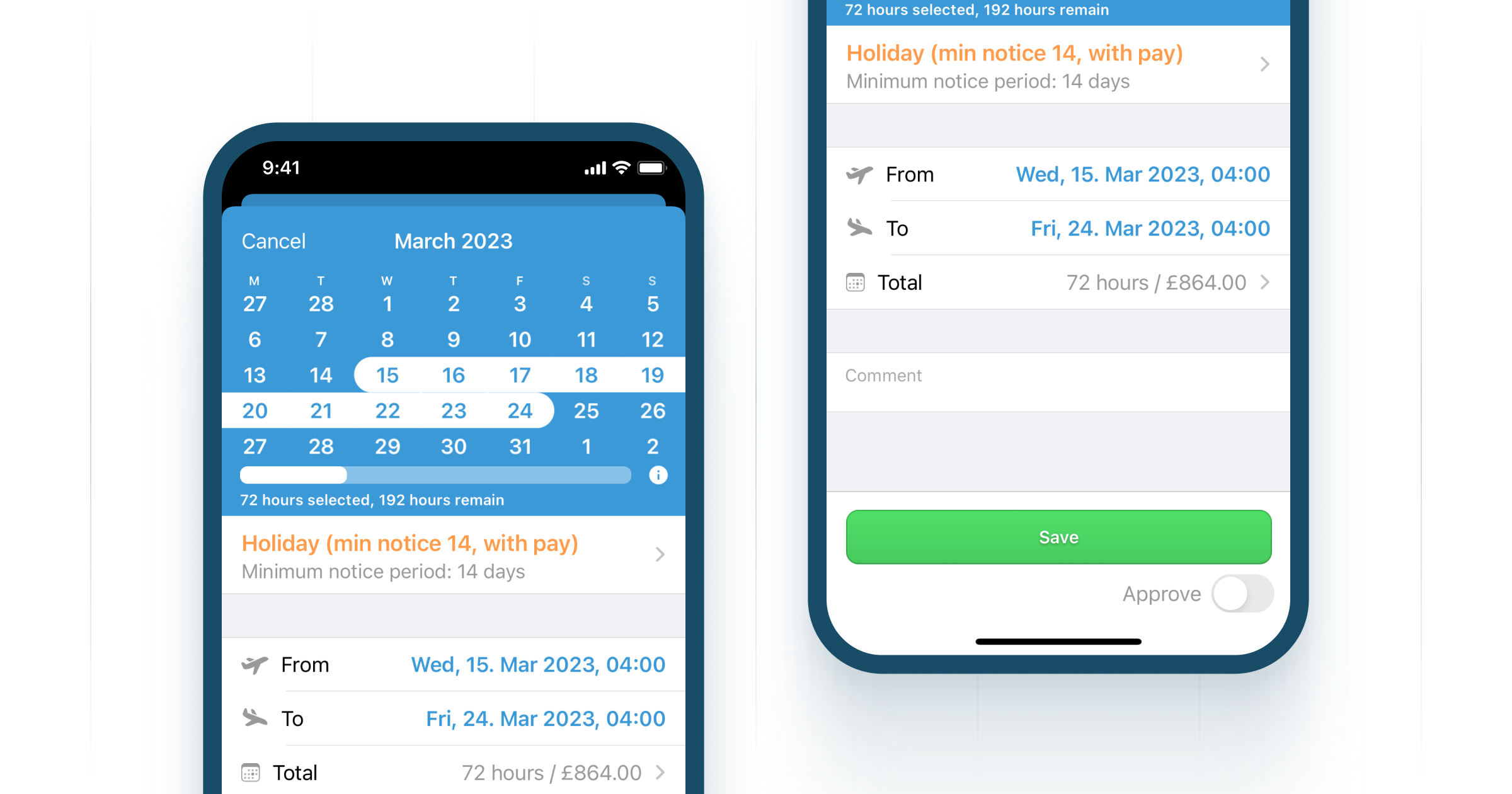Why You Should Use Time and Labor Management Software
Time and labor management can generate an immense amount of administrative work that can be inefficient and prone to human errors. In the age of digital transformation, time and labor management software (TLMS) is a notable solution that should garner the attention of every business that needs to manage its labor cost.
This blog post will unpack time and labor management and discuss how labor management systems can benefit your business with efficient workflows and methods to better control your direct costs and the indirect costs arising from administrative work and manual data entry.
What Is Labor Management?
Labor management encompasses a range of practices and strategies aimed at effectively overseeing and maximizing the potential of a company's workforce, from scheduling and time tracking to performance evaluation and resource allocation, involving interconnected processes that aim to harness the full potential of an organization's human capital.
Workforce Planning
Workforce planning involves forecasting and analyzing labor requirements based on the organization's short-term and long-term goals. This includes determining the number of employees needed, their skills and competencies, and the deployment of resources to meet demand. Workforce planning should determine how many full-time or hourly employees are needed to determine fixed labor costs.
Recruitment and Selection
This aspect focuses on attracting and hiring suitable candidates for specific job roles. It involves sourcing candidates, conducting interviews, assessing qualifications, and selecting the most qualified individuals for the organization.
Workforce Development
Once employees are hired, labor management involves training and developing their skills to enhance performance and productivity. This may include on-the-job training, mentoring programs, workshops, and other learning initiatives.
Performance Management
Labor management includes setting performance expectations, conducting regular performance evaluations, providing feedback, and implementing performance improvement plans. It aims to align individual and team goals with organizational objectives and ensure employees meet expectations.
Scheduling and Shift Management
Efficient labor management involves creating work schedules that meet operational demands while considering factors such as employee availability, workload, and labor regulations. It also includes managing shift assignments, breaks, and time-off requests.
Labor Relations
Labor relations focus on maintaining positive relationships between the organization and its employees or labor unions. This involves negotiating and managing collective bargaining agreements, addressing grievances, and fostering open communication channels.
Compliance and Legal Considerations
Labor management must adhere to labor laws, regulations, and employment practices. It includes ensuring compliance with minimum wage laws, working hour restrictions, health and safety regulations, and other legal obligations related to the workforce.
What Benefits Can Software Provide?
TLMS is an invaluable tool for human resources. It will help you streamline and automate your management processes, provide an overview of total costs, avoid human errors, and provide insight to help achieve your strategic goals as a business owner.
Control Labor Costs
TLMS will help you overview the labor budget and control total labor costs. Your variable labor cost may depend on the season, and TLMS can ensure profitability in these situations while providing an easy overview of total labor costs consisting of direct labor costs from hourly wages or, for example, a fixed cost, such as annual salary.
Automate Scheduling Processes
TLMS enables efficient scheduling by automating labor processes based on predefined rules, employee availability, workload, and other variables. It helps avoid conflicts, ensures adequate staffing levels, and simplifies the management of shifts, breaks, and time-off requests. This proves an efficient way to manage labor and reduce indirect labor costs.
Track Time and Attendance
Time management software track employee hours worked. A time clock app allows employees to clock in and out electronically, capturing accurate time and attendance data. It can integrate with mobile applications, and NFC and iBeacon tags eliminating manual record-keeping and reducing errors. This data is then used for payroll processing, cost analysis, and compliance, freeing the entire process from human errors.
Avoid Compliance Risks
Workforce management software ensures compliance with labor laws and regulations by tracking and documenting adherence to working hour restrictions and minimum wages while providing real-time data about expiring certifications.
Provide Employee Self-Service
Most TLMS platforms offer self-service portals where employees can view their schedules, request time off, and update personal information. This empowers employees and reduces administrative burdens on managers.
Analyze Workforce Productivity
Workforce management software will also help manage absences and provide data analysis capabilities to identify trends, make informed decisions, and optimize labor management strategies.
Who Should Use Labor Management Software?
Retail and Hospitality: Businesses in the retail industry, including stores, supermarkets, and malls, often have large workforces with varying shifts. Smart time and labor management help optimize scheduling, manage employee time and attendance, and ensure adequate staffing levels during peak periods. In the hospitality industry, time and labor management aids in managing employee schedules for hotels, restaurants, and event venues, facilitating efficient staff allocation and reducing labor costs.
Security: Security services can benefit from time and labor management to track their billable hours, project time, and employee performance. Time and labor management aids in optimizing resource allocation, streamlining time tracking, and ensuring accurate client billing.
Manufacturing and Distribution: Manufacturing plants and distribution centers often have complex labor requirements, with multiple shifts, production lines, and diverse skill sets. Time and labor management assist in workforce planning, scheduling, and tracking time spent on tasks or projects. It enables efficient resource allocation, reduces downtime, and enhances overall productivity.
Healthcare and Hospitals: The healthcare sector, including hospitals, clinics, and nursing homes, relies on TLMS to manage a diverse workforce of doctors, nurses, technicians, and support staff operating on various shifts. Time and labor management helps ensure accurate timekeeping, adherence to labor laws, and efficient scheduling to maintain adequate staffing levels for patient care.
Transportation and Logistics: Companies operating in the transportation and logistics sector, such as trucking companies, shipping companies, and logistics providers, require time and labor management to manage their drivers, track working hours, monitor compliance with regulations (e.g., hours of service), and optimize driver schedules for efficient route planning.
Construction and Field Services: Construction firms and businesses providing field services, such as maintenance, repair, and installation, often have mobile workforces operating at different job sites. Time and labor management facilitates scheduling and tracking of field employees, manages work orders, monitors project progress, and ensures compliance with labor regulations.
Call Centers and Customer Support: Call centers and customer support operations have dynamic staffing needs based on call volumes and service level agreements. Time and labor management helps manage agent schedules, monitor adherence to shift timings, track productivity metrics, and ensure seamless customer support operations.
Conclusion
Time and labor management software is not just a technological tool but a strategic enabler that empowers organizations to optimize their labor resources, increase productivity, and ensure compliance with labor laws. TLMS can transform labor management practices, foster a culture of productivity, and drive organizational success in today's competitive business landscape.












